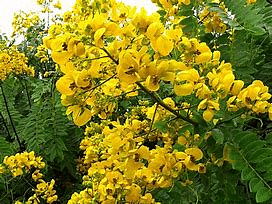UPSC Daily Current Affairs - 4th July 2024 | Current Affairs & Hindu Analysis: Daily, Weekly & Monthly PDF Download
GS3/Science and Technology
National Quantum Mission
Source: Economic Times

Why in News?
Itihaasa, a non-profit organization, has recently published an assessment of India’s National Quantum Mission.
About National Quantum Mission:
- Union Cabinet approved the National Quantum Mission (NQM) in April 2023 at a total cost of 6000 crores from 2023-24 to 2030-31
- The mission aims to seed, nurture, and scale up scientific and industrial R&D, creating a vibrant and innovative ecosystem in Quantum Technology (QT).
- This initiative will accelerate QT-led economic growth, foster the ecosystem in the country, and position India as one of the leading nations in the development of Quantum Technologies & Applications (QTA).
Mission Objectives
- Developing intermediate-scale quantum computers with 50-1000 physical qubits within 8 years using various platforms like superconducting and photonic technology.
- Satellite-based secure quantum communications between ground stations over a range of 2000 kilometres within India.
- Long-distance secure quantum communications with other countries.
- Inter-city quantum key distribution over 2000 km.
- Multi-node quantum networks with quantum memories.
Focus Areas
- Developing magnetometers with high sensitivity in atomic systems.
- Creating atomic clocks for precision timing, communications, and navigation.
- Supporting the design and synthesis of quantum materials such as superconductors, novel semiconductor structures, and topological materials for the fabrication of quantum devices.
- Developing single photon sources/detectors and entangled photon sources for quantum communications, sensing, and metrological applications.
Mission Implementation
- The mission implementation includes the establishment of four Thematic Hubs (T-Hubs) in top academic and National R&D institutes in the following domains:
- Quantum Computing
- Quantum Communication
- Quantum Sensing & Metrology
- Quantum Materials & Devices
- These hubs will focus on generating new knowledge through basic and applied research and promoting R&D in their respective areas.
Impact & Significance
- NQM has the potential to elevate the country's technology development ecosystem to a level of global competitiveness.
- The mission will greatly benefit various sectors including communication, health, financial, and energy, with applications in drug design, space, banking, security, etc.
- The mission will also provide a significant boost to national priorities such as Digital India, Make in India, Skill India, Stand-up India, Start-up India, Self-reliant India, and Sustainable Development Goals (SDG).
Assessment report of National Quantum Mission
- As per the assessment, India may have done the right thing by launching a Rs 6,000 crore-worth National Quantum Mission to develop some of the most sought-after technologies for the future.
- The assessment shows that India was just one among 17 countries to have a dedicated government programme to back research in quantum technologies, and one of the 12 to have committed separate investments for the purpose.
- However, the report cautions that India would have to overcome a significantly large gap that currently exists between its capabilities and those of other leading countries in these areas like the United States and China.
- India was far behind of the United States and China in terms of patents obtained in quantum technologies till now, and in publications in top journals.
- The assessment report found about 110-145 Indian researchers, at the principal investigator level, already working on quantum technologies at major laboratories and institutions.
- About 75-100 Post-docs and 300-400 PhD students were working with them. In addition, there were about 50-100 MTech students in different areas related to quantum technologies.
- India was producing the highest number of graduates in areas related to quantum technologies, the assessment found.
GS-III/Economics
Why has SEBI accused Hindenburg of breaking Indian law, and why has Hindenburg said that’s ‘nonsense’?
Source: Indian Express

Why in news?
Hindenburg Research received a SEBI show cause notice for short-selling Adani Enterprises Ltd stock before and after their report accusing Adani of fraud.
What is the Hindenburg Report on Adani?
- On January 24, 2023, the New York-based Hindenburg Research accused the Adani Group of “brazen stock manipulation and accounting fraud scheme over the course of decades.”
- The report led to a significant drop in the shares of Adani companies and the calling off of Adani Enterprises Ltd’s Rs 20,000-crore follow-on Public Offer (FPO). Adani Group denied all allegations, claiming the report was a “calculated attack on India.”
What is SEBI’s show cause notice about?
- Hindenburg received a show-cause notice from SEBI on June 27, 2024. SEBI alleged that Hindenburg colluded with certain entities to use non-public information to short-sell Adani Enterprises Ltd (AEL) stock before and after the release of its report, making profits.
- The notice named Hindenburg, its founder Nathan Anderson, investor Mark Kingdon, and related entities, accusing them of sharing the report draft and building short positions in AEL futures.
How has Hindenburg responded to the show cause notice?
Hindenburg dismissed the notice as an attempt to silence those exposing corruption. They stated their investment stance was legal and disclosed, and criticized SEBI for targeting them instead of investigating the Adani Group’s alleged malpractices.
Accusations:
Hindenburg accused SEBI of pressuring brokers to close short positions in Adani stocks to protect the stock prices.
Where does Kotak come into this picture?
- Involvement of Kotak: SEBI’s notice did not name Kotak Bank, which Hindenburg claims created the offshore fund structure used for shorting Adani stock.
- Response: Kotak Mahindra Bank stated that Hindenburg has never been a client and that their KYC procedures were followed with regard to clients, with investments made by Kingdon as a principal.
How much profit did Hindenburg earn by short selling Adani stocks?
- Revenue: Hindenburg earned approximately $4.1 million in gross revenue through gains related to Adani shorts from its investor relationship.
- Own Short Position: Hindenburg made about $31,000 from their short of Adani US bonds. After legal and research expenses, Hindenburg indicated they might only slightly come out ahead of break-even on their Adani short.
Way forward:
Conduct Investigation:
- SEBI should initiate an independent, comprehensive investigation into the allegations against both Adani Group and Hindenburg Research. This investigation should be conducted by a neutral third party to ensure impartiality and transparency.
Policy Review:
- SEBI could review and possibly update its regulations on short-selling and market manipulation to prevent similar incidents in the future. This could include stricter disclosure requirements for short sellers and enhanced monitoring of market activities.
Mains PYQ:
The product diversification of financial institutions and insurance companies, resulting in overlapping of products and services strengthens the case for the merger of the two regulatory agencies, namely SEBI and IRDA. Justify. (UPSC IAS/2013)
GS3/Environment
SENNA SPECTABILIS
Source: The Hindu

Why in news?
The Forest Department has approved the removal of 356.50 hectares of invasive growth in the Sathyamangalam Tiger Reserve (STR) to safeguard biodiversity.
- Senna spectabilis, also known as Calceolaria shower, belongs to the legume family and is indigenous to South and Central America. Initially introduced in the country as shade trees for coffee and firewood, this species, recognized for its vibrant yellow flowers, quickly became a menace to native tree species. It was brought under control due to its invasive nature.
SENNA SPECTABILIS:
- Senna spectabilis is a deciduous tree that is native to tropical regions of America.
- It exhibits rapid growth, achieving heights of 15 to 20 meters within a short span.
- Following its flowering phase, the tree disperses numerous seeds.
- The dense foliage of the tree impedes the growth of native trees and grass species, leading to food scarcity for wildlife, particularly herbivores.
- It has a detrimental impact on the germination and growth of native species.
- It is categorized as 'Least Concern' on the IUCN Red List.
Invasive Species:
- Invasive species are organisms that cause ecological or economic harm in new environments where they are not native.
- Such species compete with indigenous organisms, modify habitats, and diminish biodiversity.
GS3/Science and Technology
Universe had Spiral Galaxies 4 billion years sooner than expected: Study
Source: The Hindu

Why in news?
A new study has revealed more spiral galaxies in the universe’s youth than astronomers had previously expected.
Universe’s Age and Galaxy Types
- The universe is about 13.8 billion years old and hosts various kinds of galaxies, from spiral to elliptical.
- Astronomers believed spiral galaxies formed about 6 billion years ago, but the new study calls this into question.
- Younger galaxies tend to spiral, while older ones have a variety of shapes, making the study of older galaxies more challenging due to fainter light.
Back2Basics: Spiral Galaxy
- Spiral galaxies are a type of galaxy characterized by their spiral structure.
- They are among the most common types of galaxies in the universe.
Key Characteristics:
- Central Bulge: A dense, spherical structure at the centre composed mainly of older stars.
- Disk: Surrounding the bulge is a flat, rotating disk of stars, gas, and dust. The disk contains younger stars and spiral arms.
- Spiral Arms: These are the defining features, winding outward from the central bulge. The arms are sites of active star formation and appear brighter due to the presence of young, hot stars.
- Halo: A roughly spherical region surrounding the disk, containing old stars and globular clusters.
Formation and Evolution
- Spiral galaxies are thought to form from the gravitational collapse of gas and dust in the early universe.
- They maintain their structure through the rotation of the disk and the gravitational influence of the central bulge and halo.
- Interactions and mergers with other galaxies can distort or destroy their spiral structure, potentially transforming them into elliptical galaxies.
Formation of Galaxies
- As the universe cooled from a dense plasma state, hot gas formed clumps that became galaxies.
- These early galaxies had irregular shapes and lacked disks.
Spiral Formation Theory
- The traditional theory suggested that it took billions of years for hot, thick disks to become thinner and form spiral arms.
- The new study suggests that cooling and spiral formation occur around the same cosmic time.
How is this verified?
- Astronomers observe star formation in real time but study galaxy evolution through “astronomical archaeology.”
- Understanding the fraction of spiral galaxies helps astronomers trace the biography of galaxies.
- Infrared and optical wavelengths are used to detect early galaxies, requiring powerful telescopes due to the faint light of older galaxies.
James Webb Space Telescope (JWST)
- Launched in 2021, the JWST has enabled astronomers to study deeper into the universe’s past.
Study Methodology:
- The University of Missouri team used the JWST to study 873 galaxies and identified at least 216 spiral galaxies, some dating to 1.5 billion years after the universe’s birth.
- Each of the six authors classified the images as spiral or non-spiral, ensuring the result is free of human bias.
Findings and Implications
- The fraction of spiral galaxies increased from about 8% to 48% between 3 billion and 7 billion years after the Big Bang, higher than previously observed.
- The study challenges existing models and suggests that galaxy formation theories need to be more complex.
PYQ:
- Launched on 25th December, 2021, James Webb Space Telescope has been much in the news since then. What are its unique features which make it superior to its predecessor Space Telescopes? What are the key goals of this mission? What potential benefits does it hold for the human race?
GS3/Economy
CRITICAL MINERAL RECYCLING: GOVT PLANS PLI SCHEME TO BOOST CIRCULAR ECONOMY
Source: The Indian Express

Why in news?
The Ministry of Mines is planning a Production Linked Incentive (PLI) scheme to enhance the recycling of critical minerals in India. This initiative is designed to promote a circular economy and strengthen domestic supply chains, responding to the tepid reception of recent critical mineral block auctions.
Critical Minerals
- Critical minerals are essential for economic progress and national security. The scarcity or concentration of these minerals in a few regions can pose risks to supply chains.
- The Indian government has identified 30 minerals as critical, including elements like Lithium, Cobalt, Copper, and Titanium.
- These minerals are integral to modern technologies such as mobile phones, batteries, electric vehicles, and green technologies like solar panels.
- Various countries create their lists of critical minerals based on their strategic needs.
Proposed PLI Scheme and its Significance
- The proposed PLI scheme aligns with recommendations from NITI Aayog and complements the Battery Waste Management Rules (BWMR) of 2022.
- It targets e-waste recycling to recover essential minerals like Lithium, Copper, and Graphite crucial for clean energy technologies and consumer electronics.
- Some suggest the scheme should focus on high-purity minerals for reuse, while others advocate for a broader approach including the processing of e-waste rich in minerals.
- The growth of critical mineral recycling is vital as India's e-waste generation is projected to rise significantly.
Need for Incentivizing Critical Mineral Recycling
- Recycling critical minerals can decrease the dependency on virgin ores and new mines.
- The failure of most critical mineral block auctions highlights the lack of investor interest in domestic mining of critical minerals.
- The new incentives will supplement the Battery Waste Management Rules (BWMR) of 2022, ensuring environmentally sound management of waste batteries.
- Producers are accountable for managing waste batteries through Extended Producer Responsibility (EPR) compliance.
GS2/Polity
UK General Election 2024
Source: Money Control

Why in news?
The United Kingdom is preparing for a significant general election today, July 4, 2024. Prime Minister Rishi Sunak has called for a snap election, which was not due until December 2024. Experts predict a potentially landmark election, with the Labour Party poised to end the Conservatives' 14-year rule.
Nature of Parliament
The UK Parliament operates as a bicameral legislature, comprising two houses:
House of Commons
The lower house, consists of 650 MPs elected by the public using the First Past the Post (FPTP) system.
Responsibilities include lawmaking and passing legislation. The party with the majority forms the government, with its leader becoming the Prime Minister. Opposition comprises MPs from non-governing parties.
House of Lords
The upper house, made up of unelected members like life peers and bishops. It reviews and suggests amendments to laws proposed by the House of Commons.
While it can delay legislation, it cannot ultimately prevent bills from becoming law.
Nature of the Governance System
The United Kingdom operates as a constitutional monarchy and parliamentary democracy. Key features include:
- Monarch: The monarch, currently King Charles III, serves as the head of state, with ceremonial duties. Real political power lies with elected bodies.
- Prime Minister and Cabinet: The Prime Minister, appointed by the monarch and leader of the majority party in the House of Commons, heads the government. The Cabinet, comprising senior government ministers, oversees policy implementation.
Voting System of the United Kingdom
The UK utilizes various voting systems across its entities, including the First Past the Post system. Different voting systems are used by institutions like the House of Commons, Scottish Parliament, Welsh Parliament, and local authorities.
- First-past-the-post: Employed in mayoral, Police and Crime Commissioner elections, and local councils in England and Wales. Voters choose their preferred candidate, with the candidate securing the most votes emerging victorious.
What Labour’s win could mean for India-UK FTA?
The Labour Party's potential victory in the UK elections may impact the ongoing negotiations regarding a free trade agreement (FTA) between India and the UK. The agreement could lead to mutual tariff relaxations on goods such as cars, clothes, alcoholic beverages, and medical instruments.
- Political Stability and FTA: Political certainty resulting from a Labour victory could enhance stability for negotiating the FTA, benefiting both nations.
- Visa Issues: Immigration concerns, particularly regarding temporary visas for India's service sector, may be a point of contention in the trade negotiations.
- Climate Negotiations: A Labour government might lead to tougher negotiations on climate-related issues, including carbon taxes and border adjustments.
GS3/Environment
 |
Download the notes
UPSC Daily Current Affairs - 4th July 2024
|
Download as PDF |
Great Indian Bustard Recovery Plan
Source: Indian Express

Why in news?
The Compensatory Afforestation Fund Management and Planning Authority (CAMPA) approved Rs 56 crore for the next phase of the conservation program for the Great Indian Bustard (GIB) and the Lesser Florican for the 2024-2029 period.
Background
- Created due to the diversion of forest land for non-forest purposes; aimed at mitigating the loss of forest cover through compensatory afforestation.
Structure
- National CAMPA Advisory Council: Provides policy advice and ensures inter-ministerial coordination.
- State CAMPAs: Manage funds and oversee implementation at the state level.
Fund Utilization
- Funds are used for afforestation, forest ecosystem regeneration, wildlife protection, forest infrastructure, and conservation activities.
Key Activities
- Afforestation and reforestation
- Wildlife management
- Forest management
- Soil and moisture conservation
Financial Management
- Managed by CAMPA at national and state levels; non-lapsable and specifically allocated for forestry and wildlife activities.
Monitoring and Reporting
- Includes regular audits and progress reports to ensure transparency and accountability in fund utilization and project implementation.
Legal Framework
- Governed by the Compensatory Afforestation Fund Act, 2016 and CAMPA Guidelines.
Impact and Significance
- Crucial for mitigating deforestation impacts, supporting ecological balance, biodiversity conservation, and sustainable forest management.
About Great Indian Bustards
- GIBs are the largest among the four bustard species found in India, preferring grasslands as their habitats.
- GIBs face threats like habitat changes and collisions with power lines.
What is the GIB Recovery Plan?
- The proposal includes rewilding Bustards bred in ex-situ conservation centers, conducting detailed population studies, and developing artificial insemination techniques.
Back2Basics: Wildlife Institute of India (WII)
- WII is an autonomous institution under the Ministry of Environment, Forest and Climate Change, established in 1982 in Dehradun, Uttarakhand.
- Functions include offering training programs, academic courses, and advisory in wildlife research and management.
Why such a move?
- The GIB is an indicator species of grassland habitat, signaling the health of these environments.
- Population decline due to habitat loss, predation, and death by overhead power lines.
- Supreme Court's recognition of threats from power lines and conservation efforts.
Conservation Efforts and Achievements
- Initial efforts began between 2012-2013 with a long-term recovery project.
- Conservation breeding initiatives and achievements at breeding centers.
Future Plans
- Next Phase (2024-2033) targeting the upgradation of conservation centers and population surveys.
- Release of captive-bred GIBs into the wild and soft release in enclosures.
PYQ
- [2020] Desert National Park related question.
- [2019] Compensatory Afforestation Fund Management and Planning Authority related question.
GS3/Environment
Air pollution behind 7% of deaths in 10 cities
Source: The Hindu

Why in news?
A recent study disclosed in The Lancet Planetary Health journal highlighted that air pollution poses a significant health risk in India.
In 10 of the most populous and heavily polluted cities, such as Delhi, Bengaluru, and Mumbai, around 7.2% of daily fatalities were associated with elevated PM2.5 levels, surpassing the safe exposure thresholds prescribed by the World Health Organization (WHO).
About
- In September 2021, the World Health Organization (WHO) fortified its air quality standards.
- The revised guidelines specify recommended air quality thresholds for six pollutants: Ozone, nitrogen dioxide, sulphur dioxide, carbon monoxide, PM10, and PM2.5—particulate matter with diameters equal to or less than 10 and 2.5 microns.
- All six pollutants' recommended levels have been reduced from the existing standards in place since 2005.
- Non-mandatory in nature
- The WHO standards are not obligatory for any nation.
- These are solely recommended benchmarks deemed safe for human health, supported by scientific research. However, air quality does influence a country’s international reputation.
Main insights from the study by The Lancet Planetary Health journal
Observations regarding Delhi
- 11.5% of yearly deaths (approximately 12,000) result from air pollution.
- This percentage is the highest across all Indian cities.
Situation in 10 Major Cities
- The study encompassed Ahmedabad, Bengaluru, Chennai, Delhi, Hyderabad, Kolkata, Mumbai, Pune, Shimla, and Varanasi.
- Over 33,000 fatalities annually are attributed to air pollution.
- Shimla experiences the lowest pollution-related mortality burden, with 59 deaths per year (3.7% of total deaths).
- On average, air pollution accounts for 7.2% of all deaths in these cities.
PM2.5 Exposure
- PM2.5 levels in these cities exceed the WHO's safe limit (15 micrograms per cubic meter) on 99.8% of days.
- Data sourced from civil registries between 2008 and 2019 for daily fatalities.
- Over 3.6 million deaths were analyzed.
Mortality and Pollution Levels
- Mortality rises by 1.42% for every 10 micrograms per cubic meter increase in PM2.5 levels.
- Cities with lower pollution levels, such as Bengaluru and Shimla, exhibit more pronounced effects due to heightened risks at lower exposure levels.
- The research offers novel insights into the health ramifications of air pollution across different agro-climatological zones of India.
Steps Taken by the Indian Government
- National Clean Air Programme (NCAP)
- Launched in January 2019 to enhance air quality through city-specific strategies.
- India aims to decrease PM2.5 and PM10 concentrations by 20-30% by 2024 compared to 2017 levels under NCAP.
PRANA Portal
- Introduced to oversee NCAP implementation
- National Air Quality Index (AQI)
- Established in October 2014 to communicate air quality data in a user-friendly manner to the public. The index relies on eight pollutants: PM10, PM2.5, NO2, SO2, CO, O3, NH3, and Pb.
- Under the jurisdiction of the Air (Prevention and Control of Pollution) Act of 1981, India’s Central Pollution Control Board establishes national ambient air quality standards.
GS3/Environment
Factory accidents, a pointer to rusty inspection reform
Source: The Hindu

Why in news?
In May 2024, an explosion at a reactor in a chemical factory within the Dombivli Maharashtra Industrial Development Corporation (MIDC) area caused fatalities and injuries among workers and local residents.
Present Scenario in India
- India continues to witness frequent fatal industrial accidents, often due to:
- Non-compliance with safety regulations
- Inadequate inspections
- Compromised safety practices
- Recent incidents, such as the Dombivli MIDC chemical factory explosion, highlight:
- The recurring nature of these accidents
- Their devastating impact on lives and infrastructure
- Disparity between the number of registered factories and inspection rates across states like Maharashtra, Gujarat, and Tamil Nadu
Causes of fatal industrial accidents
- Non-compliance with Safety Regulations: Many industrial accidents occur due to:
- Inadequate Maintenance and Inspection Practices: Poor maintenance of industrial equipment and facilities can lead to malfunctions and accidents.
- Human Error and Unsafe Practices: Accidents often result from human errors such as negligence, fatigue, or lack of training.
Need for the right reforms
- Strengthening Regulatory Framework: Reforms should focus on updating and strengthening safety regulations to align with international standards.
- Improving Inspection and Enforcement: Enhancing the capacity and effectiveness of regulatory bodies responsible for inspecting industrial facilities.
- Promoting Transparency and Accountability: Establishing transparent mechanisms for reporting and investigating industrial accidents.
What can be the solution? (Way forward)
- Enhanced Regulatory Oversight: Strengthening and strictly enforcing safety regulations and standards across all industries.
- Improving Inspection and Compliance: Increasing the number of qualified inspectors and improving their training and capabilities.
- Promoting Safety Culture: Encouraging a proactive safety culture within industries through training and awareness programs.
Mains PYQ:
What is the significance of Industrial Corridors in India? Identifying industrial corridors, explain their main characteristics. (UPSC IAS/2018)
|
39 videos|4566 docs|979 tests
|
FAQs on UPSC Daily Current Affairs - 4th July 2024 - Current Affairs & Hindu Analysis: Daily, Weekly & Monthly
| 1. What is the National Quantum Mission and why is it in the news? |  |
| 2. Why has SEBI accused Hindenburg of breaking Indian law, and why has Hindenburg denied this accusation? |  |
| 3. What is the Hindenburg Report on Adani and why is it significant? |  |
| 4. What is SEBI's show cause notice about and how has Hindenburg responded to it? |  |
| 5. How does Kotak come into the picture in the controversy involving SEBI, Hindenburg, and Adani? |  |























